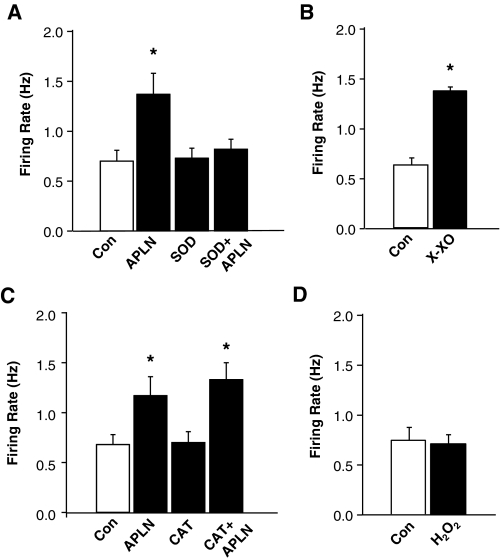Fig. 6.
Identification of ROS involved in the chronotropic actions of apelin-13 in neurons. A, role of superoxide. The neuronal firing rate was recorded in neurons treated under the following conditions: superfusion of PBS control (Con); superfusion of apelin-13 (APLN, 100 nM) followed by washout of apelin-13 with fresh superfusate solution; superfusion of PEG-SOD (SOD, 25 U/ml), and PEG-SOD plus apelin-13 (SOD+APLN). Data are mean ± S.E. (n = 9 neurons). B, effect of xanthine-xanthine oxidase on neuronal firing rate. The neuronal firing rate was recorded in neurons treated under PBS control (Con) and superfusion of xanthine-xanthine oxidase (10 mM and 20 mU/ml). Data are mean ± S.E. (n = 5 neurons). C, role of hydrogen peroxide. The neuronal firing rate was recorded in neurons treated under the following conditions: superfusion of PBS control (Con); superfusion of apelin-13 (APLN, 100 nM) followed by washout of apelin-13 with fresh superfusate solution, superfusion of PEG-catalase (CAT, 250 U/ml), and PEG-catalase plus apelin-13 (CAT+APLN). Data are mean ± S.E. (n = 7 neurons). D, effect of hydrogen peroxide on neuronal firing rate. Data are mean ± S.E. of neuronal firing rate in eight neurons treated under PBS control (Con) and superfusion of hydrogen peroxide (H2O2, 1 μM). *, P < 0.05 compared with respective control.

